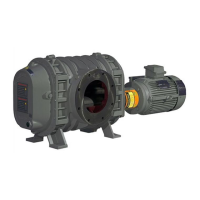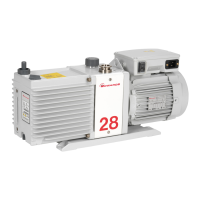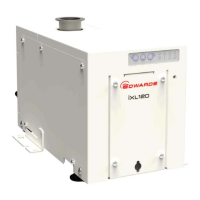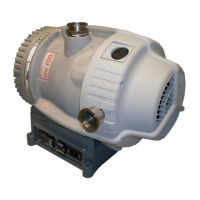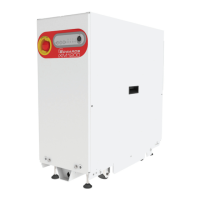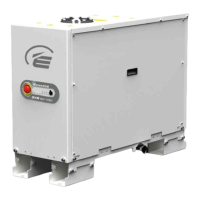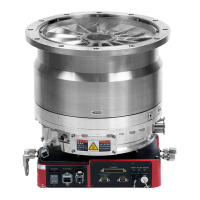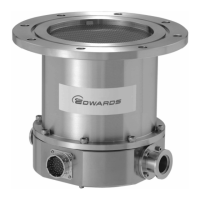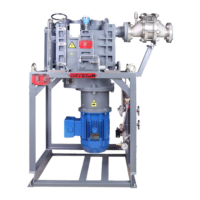When opening gas ballast valve, do not open past third marking on valve stem (See Figure 12).
Open the gas ballast valve for maximum efficiency. Adjust the ballast by turning the valve for desired rate. Full gas
ballast will cause pump temperature to rise and is normal. For maximum effect of gas ballast, pump should operate
at approximately 71 °C (160 °F). The operating temperature can be raised by throttling the cooling water. Consult
Edwards for available oil temperature control kits.
If pumping water vapor in excessive quantities, the oil may become contaminated. The oil can be purified by running
the pump with full gas ballast while the pump is isolated from the system. When excessive contaminants are present,
indicated by high oil level, or thinning, formation of varnish, etc., the oil should be replaced.
Note: For dirty applications where condensable contaminants (asphalt, pitch, epoxies, etc.) other than water
vapor are present, the pump should be operated near 71 °C (160 °F).
Switch on inert gas purge to remove air from the pump and exhaust pipeline before the process starts.
Note: Edwards recommends obtaining and reading the Vacuum Pump and Vacuum System Safety manual
(publication number P300-20-000), available from Edwards or the supplier.
z The gas ballast check valve should be inspected every six months for wear or a broken spring when operating
on an eight (8) hour a day basis; 3 months for twenty-four (24) hour a day operation.
z The gas ballast valve should be closed when the pump is stopped. If the valve is open, gas will be drawn into
the pump through the check valve and the vacuum manifold will be pressurized with atmospheric air. If
desired, a solenoid valve attached to the gas ballast inlet and electrically connected to the motor leads can
be used to turn off the gas ballast automatically on pump shutdown. Contact Edwards for additional
information.
Figure 12 - Gas ballast setting
z When a pressurized gas is used to ballast the pump, the pressure must be reduced to 2 psi maximum. The use
of higher pressures may damage the pump.
z Opening the gas ballast slightly will quiet discharge valve noise when the pump is blanked off, but will
prevent reaching the lowest ultimate pressure.

